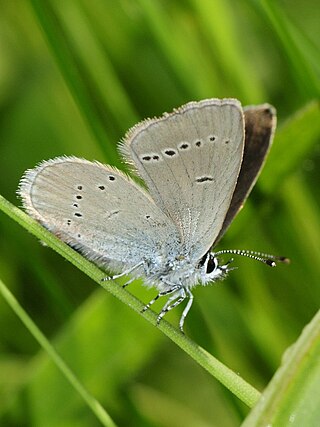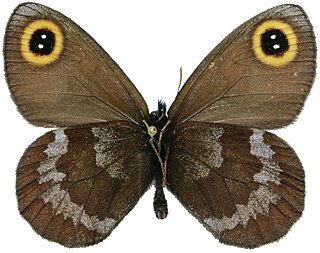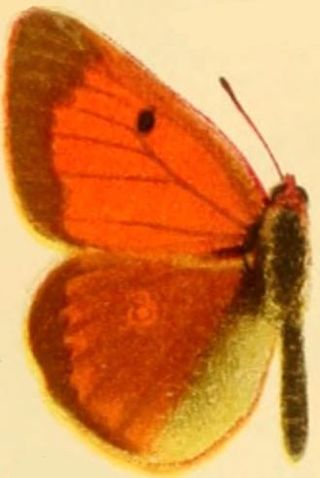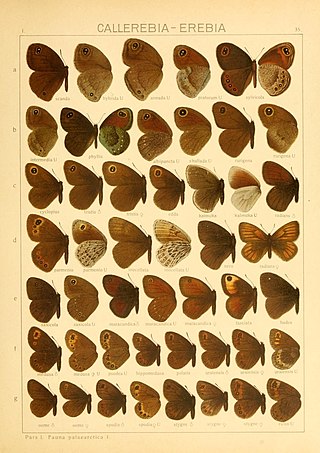
The pearl-bordered fritillary is a butterfly of the family Nymphalidae found in Europe and through Russia across the Palearctic to the north of Kazakhstan.

The dark green fritillary is a species of butterfly in the family Nymphalidae. The insect has a wide range in the Palearctic realm - Europe, Morocco, Iran, Siberia, Central Asia, China, Korea, and Japan.

Scolitantides orion, the chequered blue, is a species of butterfly in the family Lycaenidae. It is found in Europe, Russia and east across the Palearctic to Japan.

Boloria titania, the Titania's fritillary or purple bog fritillary, is a butterfly of the subfamily Heliconiinae of the family Nymphalidae.

Boloria pales, the shepherd's fritillary, is a butterfly of the family Nymphalidae. It is found from the Cantabrian Mountains and the Pyrenees through the Alps and Apennine Mountains east to the Balkan, Carpathian Mountains, the Caucasus and central Asia up to western China.

Leptidea amurensis is a butterfly of the family Pieridae. It is found from western Siberia to the Ussuri region and in North Korea, China, Mongolia and Japan.

Muschampia tessellum, the tessellated skipper, is a butterfly of the family Hesperiidae. It is found from the southern Balkan Peninsula through Ukraine, southern Russia and Asia Minor, southern Siberia, Mongolia, east to the Amur region.

The Osiris blue is a butterfly in the family Lycaenidae. It is found in South Europe, Asia Minor, southern Siberia, the Alay Mountains, Tian-Shan, Dzhungarsky Alatau, the Altai Region, the Sayan Mountains, Lake Baikal and Mongolia. It is often confused with the small blue, a closely related species.

Melitaea arduinna, or Freyer's fritillary, is a butterfly of the family Nymphalidae. It is found from south-eastern Europe across Asia Minor to central Asia and the Altai. The habitat consists of steppe-clad slopes.

Erebia cyclopius is a species of butterfly of the subfamily Satyrinae in the family Nymphalidae. It is found through Siberia, northern Mongolia, northern China and North Korea. The habitat consists of forest edges, flowery meadows and sparse larch forests.

Colias heos is a butterfly in the family Pieridae. It is found in the East Palearctic.

Euphydryas iduna is a small butterfly found in the Palearctic that belongs to the browns family.

Euphydryas intermedia synonym ichnea is a small butterfly found in the Palearctic that belongs to the browns family. It occurs up to 2200 m above sea level.

Boloria oscarus is a small butterfly found in the East Palearctic that belongs to the browns family.

Erebia edda is a small butterfly found in the East Palearctic that belongs to the browns family.

Erebia kefersteini is a butterfly found in the East Palearctic that belongs to the browns family.

Patricius lucifer is a butterfly found in the East Palearctic that belongs to the blues family.

Neolysandra coelestina is a butterfly found in the Palearctic that belongs to the blues family.

Polyommatus damone is a Palearctic butterfly in the Lycaenidae family.




















